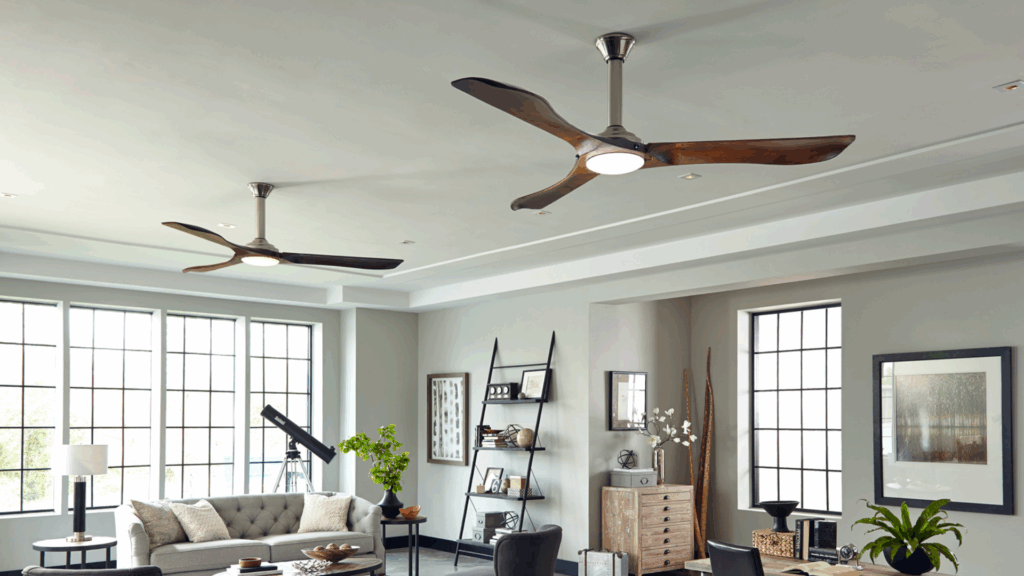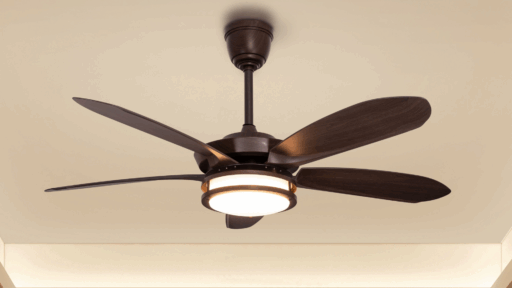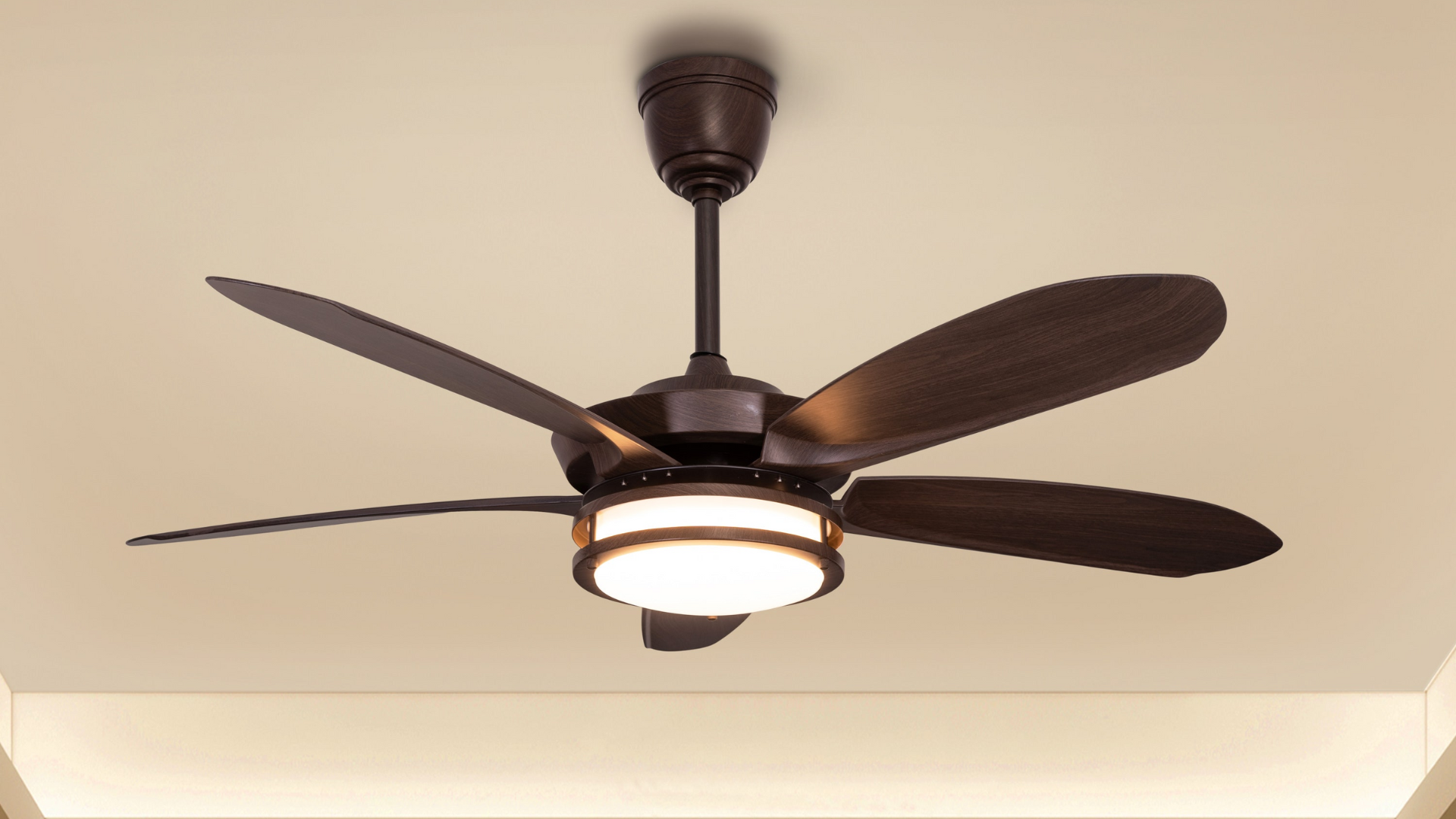Choosing the right ceiling fan for your room can feel overwhelming. With so many options available, I know how confusing it gets when you’re standing in the store or browsing online.
But here’s the thing, picking the perfect ceiling fan doesn’t have to be complicated. I’ll show you the key factors that matter, so you can make a smart choice without the guesswork.
In this blog, I’ll walk you through room size considerations, blade materials, motor quality, and style options. You’ll also learn about energy efficiency and installation requirements.
By the end, you’ll know exactly what to look for in a ceiling fan that fits your space and budget perfectly.
Why Knowing How to Choose a Ceiling Fan Matters
Knowing how to choose a ceiling fan matters to me because it directly affects both my comfort and energy bills.
When I pick the right fan, I can enjoy a cool and pleasant space year-round, without relying too heavily on air conditioning.
The right fan size and style also complement my room’s décor, making my home feel more inviting and put together. I care about efficiency, so selecting a fan with a good energy rating helps me save money in the long run while being mindful of my environmental footprint.
Additionally, features like remote controls, adjustable speeds, and quiet operation make a significant difference in my daily life.
Understanding these options lets me find a fan that fits my specific needs, ensuring I get the right mix of functionality, style, and value.
Checklist for How to Choose a Ceiling Fan

Choosing the right ceiling fan is important to maximize comfort, energy savings, and aesthetic appeal in any space. Understanding the main factors that affect fan performance helps in making an informed choice tailored to your room and lifestyle. The following is a detailed guide on how to choose a ceiling fan.
1. Room Size and Fan Dimensions
When choosing a ceiling fan, it’s essential to match the fan size and downrod length with your room’s dimensions and ceiling height.
This ensures optimal airflow, aesthetics, and safety. The following is a quick reference table to help you choose the right fan.
| Room Size (sq. ft.) | Recommended Fan Diameter | Ceiling Height | Suggested Downrod Length |
|---|---|---|---|
| 29″ – 36″ | 8 ft | 3″ – 6″ | |
| 76 – 144 sq. ft. (e.g., bedrooms, offices) | 36″ – 42″ | 9 ft | 6″ – 12″ |
| 145 – 225 sq. ft. (e.g., living rooms, large bedrooms) | 44″ – 50″ | 10 ft | 12″ – 18″ |
| 226 – 400 sq. ft. (e.g., large living rooms, great rooms) | 50″ – 54″ | 11 ft | 18″ – 24″ |
| > 400 sq. ft. (e.g., open concept spaces, large great rooms) | 56″ – 72″ | 12 ft or higher | 24″ – 72″ (depending on height) |
2. Blade Design and Number
Blade shape, material, and number affect airflow and noise.
Typical fans have 3 to 5 blades, with fewer blades usually moving air faster but potentially noisier. Blade pitch (the angle) also matters; steeper pitches push more air. Materials range from wood and metal to synthetic composites, chosen for durability and style.
The blade design complements room décor while balancing performance. Leaf-shaped or decorative blades may prioritize aesthetic appeal in specific styles, like tropical or rustic rooms.
3. Motor Type and Performance
Ceiling fans typically use AC or DC motors. DC motors are more energy-efficient, consuming up to 57% less electricity, offer quieter operation, faster speed adjustments, and longer lifespan. AC motors are more common and usually less expensive but less efficient.
Choosing a fan with a high-quality, well-balanced motor improves performance and reduces energy costs over time. Motor quality also influences noise levels and durability.
4. Lighting and Controls
Many ceiling fans come with integrated lighting options such as LED arrays for energy-efficient illumination. Choosing the type and brightness of lighting matters depending on room use.
Controls vary from wall switches and pull chains to remote controls and smartphone apps for convenience and customizable speed, light dimming, and timer functions.
Modern fans often combine lighting and fan controls in sleek designs to improve usability and ambiance.
5. Style and Aesthetics
The fan’s style should complement the room’s design. Options range from traditional brass and bronze finishes to modern and minimalist, or even whimsical tropical and rustic designs.
Blade finishes and shapes can add texture and character.
Choosing a style that harmonizes with furniture and lighting fixtures enhances the room’s overall aesthetic, making the fan an integral part of the décor rather than just a utility
6. Installation and Safety
Proper installation requires secure mounting to a ceiling box that supports fan weight and vibration. The fan should have blades at least 7 feet from the floor and away from walls or curtains (usually 24 inches minimum).
For bathrooms or outdoor spaces, selecting damp- or wet-rated fans is necessary to withstand moisture and weather.
Hiring a professional or ensuring correct wiring and mounting enhances safety and prevents damage or accidents
7. Energy Efficiency and Cost Savings
Energy Star-rated fans consume significantly less power. Using LED lighting with the fan also reduces energy use. DC motor fans save more electricity compared to AC motors.
Efficient fans lower utility bills and environmental impact while maintaining comfort.
Considering both upfront cost and long-term operating expenses helps balance price with savings, making energy-efficient fans a smart investment
8. Current Trends in Ceiling Fan Design
Contemporary trends include slim, minimalistic fan designs, integrated smart home compatibility, eco-friendly materials, and multi-speed silent motors.
Many fans now feature multi-function lamps with adjustable color temperatures and app-based controls.
Blades in unconventional shapes like mixed materials or minimalist styles create subtle yet stylish statements. Design trends focus on blending technology, appearance, and sustainability
9. Choosing the Right Fan for Specific Rooms
Different rooms have different needs. Bedrooms benefit from quiet, low-speed fans for restful sleep; living rooms need larger fans for better air circulation; kitchens require easy-to-clean blades resistant to grease.
Bathrooms and outdoor spaces need damp or wet-rated fans for moisture resistance. Considering room function, size, and decor ensures the fan chosen matches the practical and stylistic requirements
Installation and Maintenance Tips for Ceiling Fan
Proper installation and regular maintenance are crucial for getting the best performance, safety, and longevity from your ceiling fan.
Following a few best practices helps you avoid unnecessary issues and ensures efficient operation year-round.
- Always turn off the main power supply before installing or servicing a ceiling fan.
- Use the mounting bracket and hardware provided by the manufacturer for secure installation.
- Ensure the fan blades are at least 7ft above the floor and 18in from walls or obstructions for effective air circulation.
- Tighten all screws and connections periodically to prevent wobbling or noise.
- Clean fan blades regularly with a damp cloth to avoid dust buildup affecting speed and balance.
- Lubricate moving parts if recommended in the manufacturer’s manual; many modern fans use permanently lubricated bearings.
- Check wiring periodically for wear or loose connections to ensure electrical safety.
- Use a sturdy ladder and exercise caution when accessing ceiling fans, especially in high-ceiling rooms.
The Bottom Line
How to choose a ceiling fan comes down to understanding your room’s needs and your personal preferences.
I’ve shared the essential factors, from measuring your space correctly to choosing quality motors and the right blade materials.
Remember, a good ceiling fan is an investment in your comfort. Take time to consider each factor we discussed. Don’t rush the decision on how to pick a ceiling fan just to save a few dollars upfront.
Start by measuring your room and setting a realistic budget. Then visit your local store or browse online with confidence.
You now have the knowledge to choose wisely and enjoy years of comfortable airflow in your home








